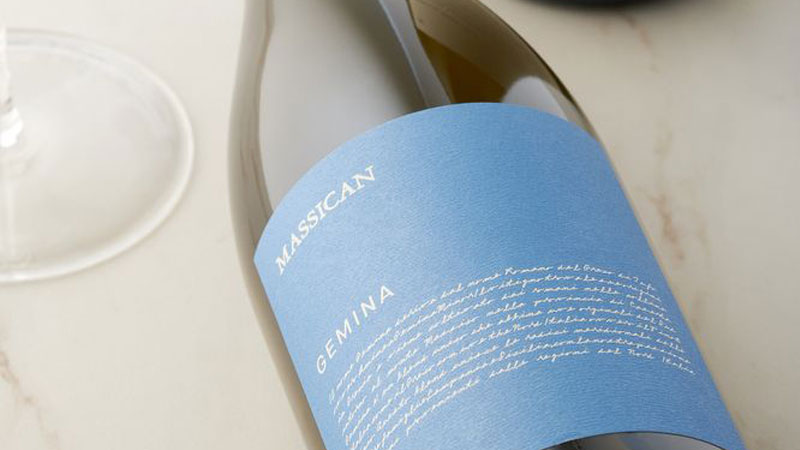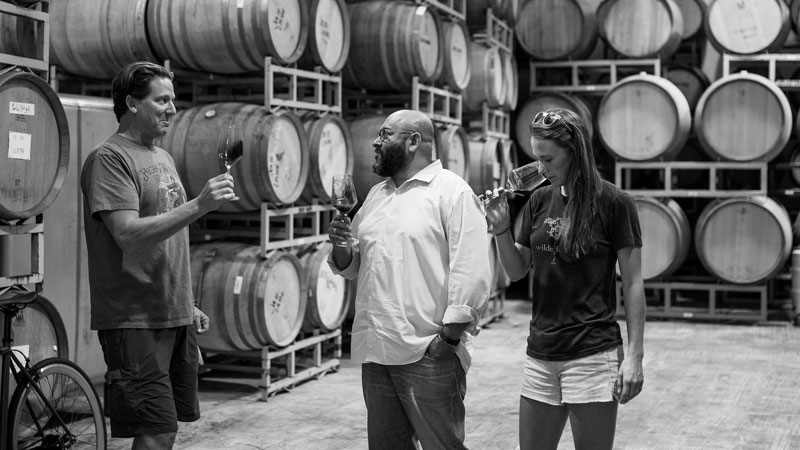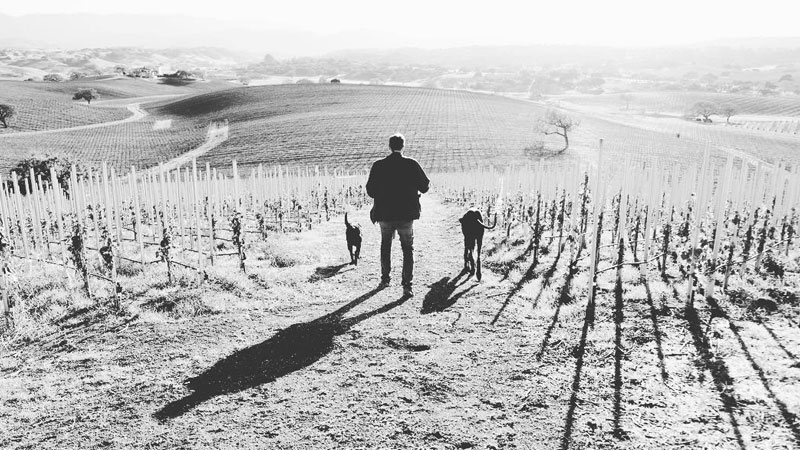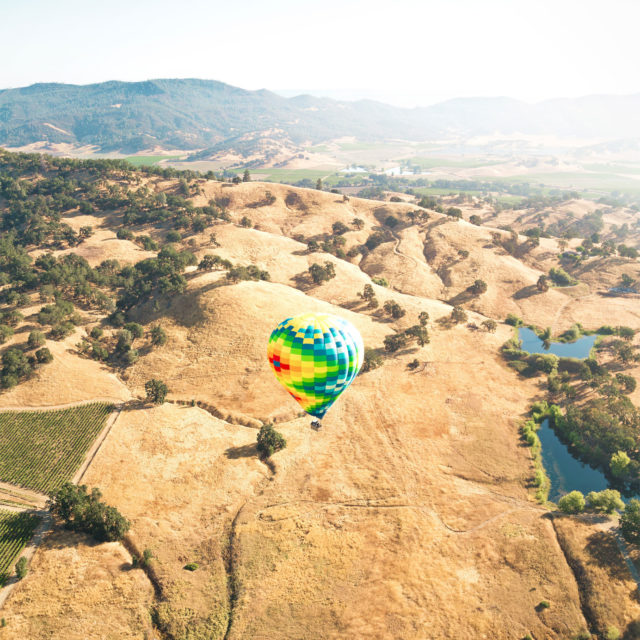For many American wine drinkers, California is synonymous with Chardonnay, Cabernet, and Pinot Noir. It makes sense: This trifecta dominates viticulture in the Golden State.
According to California’s most recent Department of Food and Agriculture report, in 2017, Chardonnay, Cabernet, and Pinot Noir were the top three most-planted wine grapes statewide. Plantings spanned more than 93,000, 91,000, and 45,000 acres, respectively.
However, a handful of producers are venturing into the unknown, exploring the untapped potential of “alternative” varieties in California soils. Meet the winemakers pioneering this new wave of California viticulture. Their passion-fueled projects are impacted by market share and climate change, and have enormous potential to revolutionize how the world thinks about and drinks California wines.
Don't Miss A Drop
Get the latest in beer, wine, and cocktail culture sent straight to your inbox.
In Napa, Dan Petroski, owner and winemaker of Massican Wines, works with the region’s usual suspects of Sauvignon Blanc and Chardonnay, but his passion lies in native Italian varieties. Petroski vinifies two white blends using a combination of Tocai Friulano, Ribolla Gialla, Pinot Grigio, and Greco di Tufo.
“I started Massican out of pure nostalgia for the time I lived in the Mediterranean and was drinking mostly white wines,” he says, noting the similarities between the climates of Napa and coastal Italy. “I started seeking out similar wines made in America that reminded me of those Italian days,” he says, but he was rather unsuccessful. This pushed him to try his hand at vinifying one on his own. And, just like that, his two white blends, Annia and Gemina, were born.
For Jaimee Motley, curiosity was also a major driving factor to cultivate “alternative” varieties in Sonoma. After being lucky enough to be exposed to high-quality Burgundies while working at RN74, she ultimately thirsted for something different. Chenin Blanc and Mondeuse captured her heart.
“I chose to work with [other] varieties out of pure fascination,” she says. Looking to California’s past helped her decide which ones to cultivate. “Over half of Napa was planted to Chenin Blanc in the early 1900s,” she says. Mondeuse was less widely planted, but “it was also widespread during that same time.” Many of these vines were ripped out and replaced with more “popular” varieties in the 1990s.
“I just fell in love with these two varieties,” she says, noting their naturally high acidity and ability to express terroir. Motley also vinifies a Cabernet Sauvignon in what she calls “old-school style.”
“I am drawn to higher elevation, old-vine Cabernet with forgotten-about clonal material, where the skin-to-juice ratio is almost equivalent,” she says. The dry-farmed and organic nature of the vineyards with which she works contributes to her Cab’s character.
Motley vinifies her wines in the same facility as Pax Mahle and Scott Schultz, both of whom work with the lesser-known Trousseau Gris variety. Schultz, like Motley, recalls his days working the restaurant floor for the Keller Group in San Francisco, and specifically how unadventurous consumers were to drink anything other than countless bottles of Chardonnay and Pinot Noir.
Schultz and Mahle share a love for Trousseau Noir, which motivated them to experiment with Trousseau Gris.
“The fact that these varieties are lesser known in California doesn’t mean they’re bad, they’re just different,” Schultz says. “There has never been zero ambition to do Chardonnay, Pinot Noir, or Cabernet, but other people in California do those really well — so why bother when there are so many other things out there?”

Ballard Canyon-based Pete Stolpman creates an array of site-specific Syrah bottlings — the unofficial sweetheart variety of the region — but his estate has become equally renowned for its experimental cuvées. He cultivates Sangiovese, his father’s favorite, as well as Gamay and Chenin Blanc, both of which were inspired by the preferences of Rajat Parr, his partner in his sub-brand, Combe.
Stolpman says that 90 percent of his inspiration for growing these varieties is passion and love of delicious wine. The other 10 percent comes from a desire to push the envelope for both the winery and Santa Barbara County as a whole.
“We are a young wine-growing region, and it is too easy to grow Pinot Noir because it is popular,” he says. “But the market is already saturated. Gamay will be a much bigger niche in five years — it will be interesting to see if farmers saturate the Gamay market in the next 10 years, like they did to Syrah in the 1990s and 2000s.”
Motley echoes Stolpman’s sentiments about the crowded sales field. “The market is very saturated currently, and I think you have to present high-quality, delicious wines, no matter what the price point is,” she says. “I do not feel the need to make esoteric or noble varieties to sell wine.” Being genuine, having a vision, and following through are all keys to success, Motley says, regardless of the varieties you’re planting.
Stolpman believes the market saturation of California Cabernet, Pinot Noir, and Chardonnay could work in his favor. “It’s often easier” to sell more unusual varieties, he says. “They are delicious and unique with no competition!”
Petroski finds that Massican’s white blends are harder to sell than single-varietal wines, such as Chardonnay or Sauvignon Blanc, but they nonetheless attract a dedicated audience. “These [blends] are unique to the white wines of California and that makes them attractive to those exploring diversity in their drinking habits,” he says. “Those adventurous drinkers have helped sales over the years!”
“We have a funny brand with a funny name and use funny varieties, though what many would consider an uphill battle ends up fitting with our personality, so it works out fine,” Schultz says. Still, he acknowledges that, “in the grand scheme of things, a lot of big brands would never want to bother with lesser-known varieties, because they know Cabernet is king.”

Climate change motivated Stolpman to replant Mourvèdre, due to its late-ripening nature. Petroski says climate change has affected California viticulture in myriad ways. There was an array of varieties planted in the state for more than 150 years, he says, but shifting climate and market demands narrowed wineries’ plantings to a handful of grapes that perform exceedingly well.
“Cabernet is great for growing in Napa Valley right now,” he says, “but the scientific climate forecast will tell us that, in 20 to 30 years, the weather will be too warm in Napa to effectively mature Cabernet flavors and textures. Therefore, we will be looking at having to plant varieties that succeed in warmer growing regions like Spain, the southern Mediterranean, et cetera.” Embracing change is the only way to succeed — in California and beyond.
